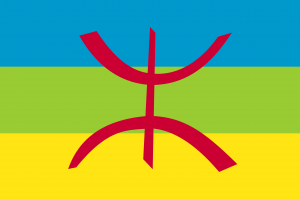Language/Central-atlas-tamazight/Grammar/Adjectives
Hi Central Atlas Tamazight learners! 😊
In today's lesson, we will be discussing adjectives in Central Atlas Tamazight. Adjectives are words that describe or modify nouns and pronouns. They can be used to give more information about the noun or pronoun they are modifying. In Central Atlas Tamazight, adjectives are usually placed after the noun or pronoun they are modifying.
Adjective Formation
Adjectives in Central Atlas Tamazight are formed by adding suffixes to nouns and verbs. The suffixes used depend on the gender and number of the noun or pronoun being modified.
Masculine Singular
For masculine singular nouns and pronouns, the suffix -en is added to the end of the word. For example, the word for "big" is tafen, which is formed from the noun taf (meaning "size").
Feminine Singular
For feminine singular nouns and pronouns, the suffix -et is added to the end of the word. For example, the word for "beautiful" is tawet, which is formed from the noun taw (meaning "beauty").
Masculine Plural
For masculine plural nouns and pronouns, the suffix -enen is added to the end of the word. For example, the word for "strong" is tafenen, which is formed from the noun taf (meaning "strength").
Feminine Plural
For feminine plural nouns and pronouns, the suffix -eten is added to the end of the word. For example, the word for "wise" is taweten, which is formed from the noun taw (meaning "wisdom").
Adjective Agreement
When using adjectives in Central Atlas Tamazight, it is important to make sure that the adjective agrees with the noun or pronoun it is modifying. This means that the adjective must have the same gender and number as the noun or pronoun it is modifying.
For example, if you are talking about a group of people, you would use the feminine plural form of the adjective. If you are talking about one person, you would use the masculine singular form of the adjective.
Adjective Order
In Central Atlas Tamazight, adjectives usually come after the noun or pronoun they are modifying. However, there are some exceptions to this rule. For example, when using two adjectives to describe a noun or pronoun, the adjective that describes the size or shape of the noun or pronoun usually comes first.
For example, if you wanted to say "big red house", you would say "tafen tizi n tazart". Here, the adjective tafen (meaning "big") comes before the adjective tizi (meaning "red"), because it is describing the size of the house.
Conclusion
In this lesson, we have discussed adjectives in Central Atlas Tamazight. We have looked at how adjectives are formed, how they agree with the noun or pronoun they are modifying, and the order in which they are used.
We hope that this lesson has helped you to gain a better understanding of adjectives in Central Atlas Tamazight.
If you have any questions, please ask them in the comments section below.
Feel free to edit this wiki page if you think it can be improved. 😎

